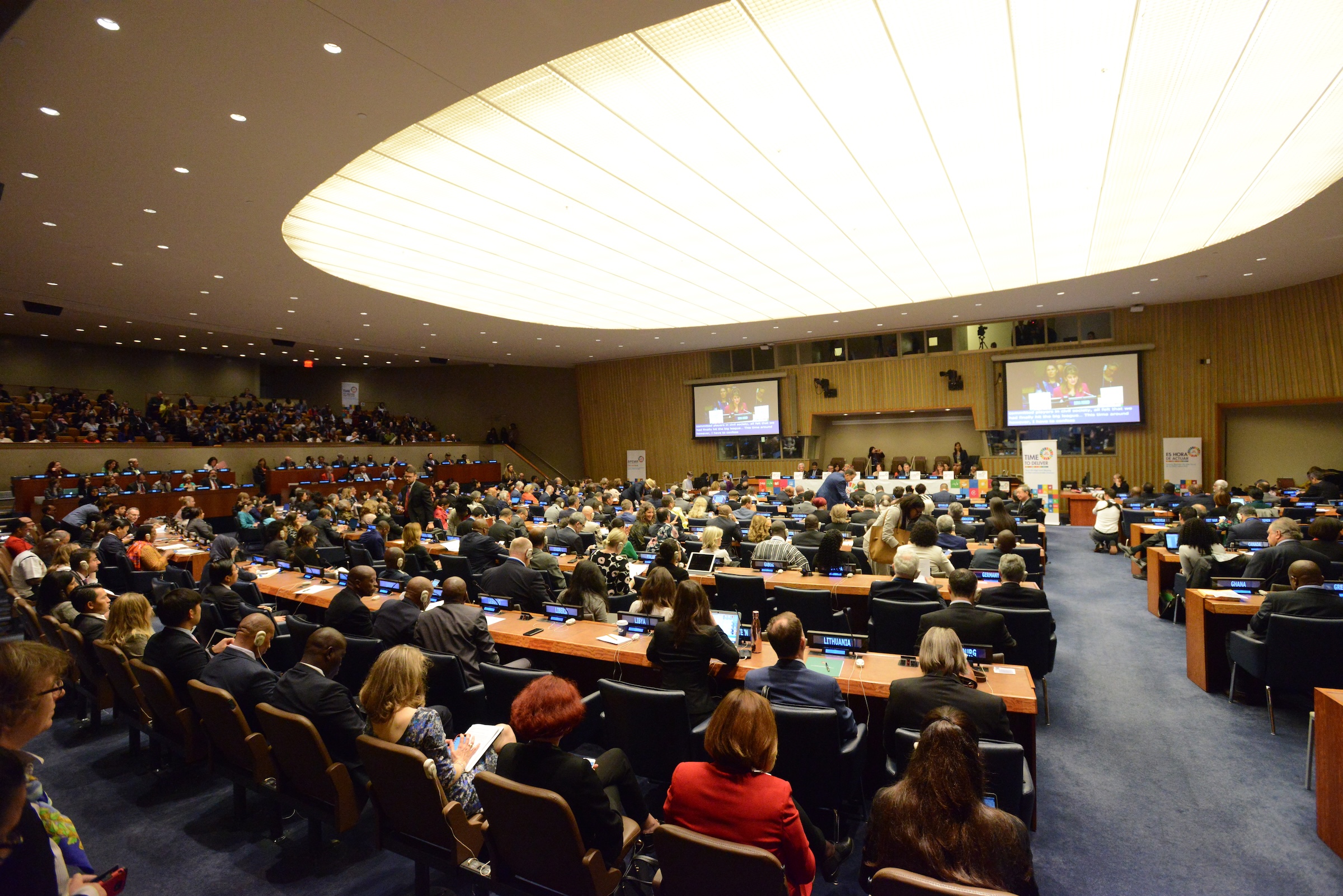On 25 September 2025, global leaders will gather in New York for the fourth United Nations General Assembly High-level Meeting on the Prevention and Control of Noncommunicable Diseases (NCDs)1 and the Promotion of Mental Health and Wellbeing (HLM4).
This meeting comes at a critical time: with just five years left to achieve the Sustainable Development Goals (SDGs), the global community must shift from commitments to action. NCDs are the leading cause of death and disability worldwide, and progress towards addressing them has slowed since 2015, falling far short of what is needed to achieve global targets. As governments report on SDG progress at the High-Level Political Forum (HLPF), with SDG 3 on ‘health and wellbeing’ on the agenda, we at the Coalition of Partnerships for UHC and Global health urge a fresh re-commitment to UHC, addressing the determinants of health, and participatory governance, recognizing that achieving NCD target 3.4 and UHC target 3.8 are interdependent goals: we cannot achieve one without the other.
Here’s why it’s important to:
1. Make UHC a national priority
Half of the world’s population still lack access to essential health services, and for those who do seek care, the costs are often devastating and impoverishing. Nearly two billion people face financial hardship due to health spending. NCDs, which often require long-term treatment, place a heavy financial burden on families, leading to generational cycles of debt, poverty, and disease. UHC based on primary health care (PHC), with strong referral systems to specialised care, is the solution, as it ensures that everyone, everywhere, can access the full range of essential health services they need—when and where they need them—without financial hardship.2
The HLM4 Political Declaration must place UHC at the centre, and encourage the implementation of publicly financed national health benefit packages that cover essential, quality health services, including the prevention, diagnosis, treatment, and long-term management of NCDs and mental health condition
The HLM4 Political Declaration3 should aim to re-energize Member States' commitment to UHC and its implementation, and continue to emphasize the importance of integrating person-centred noncommunicable disease prevention, control and management into publicly financed national health benefits packages. We urge Member States to retain the targets included in the draft text on health taxes, access to an essential package of quality-assured medicines and technologies, and financial protection policies, as these are key drivers for advancing UHC. We also welcome the mention of strategic purchasing arrangements, such as pooled procurement, to stimulate the scaled-up implementation of cost-effective interventions identified in health benefit packages. These priorities should be reflected in ongoing discussions on the HLPF, where countries are charting a course toward accelerated action towards the SDGs and UHC.
2. Address the determinants of health
Social determinants of health – the conditions in which people are born, grow, work, live, and age – significantly influence health inequities. For instance, for marginalized populations, factors such as limited access to quality housing, education, social protection and healthy food, along with exposure to infectious diseases, increase the severity and diversity of NCDs. Women and girls living with or at risk of developing NCDs and mental health conditions face unique and systemic barriers to healthcare services—particularly in low-resource environments. Limited financial autonomy, restricted time and mobility, and caregiving responsibilities may prevent them from seeking timely care. Structural economic disadvantages, such as the global gender pay gap, unpaid and invisible care work, underemployment, and lack of social protection, further reduce their ability to afford and access health services.
Women, children, and adolescents (WCAH) are particularly vulnerable to the effects of health inequities and gaps in care. The rising burden of NCDs among adolescents and the long-term impacts of poor maternal health on both mothers and children must be better addressed through integrated, life-course approaches to health. The HLM4 Political Declaration must explicitly prioritize WCA health as a core element of NCD prevention and UHC. This includes ensuring access to age-appropriate services for adolescents, strengthening maternal health services with embedded NCD screening and management, and addressing intergenerational risks linked to poor nutrition and environmental exposures.
Addressing the determinants of health yields greater prevention and early diagnosis leading to better health outcomes across the life course. We support the considerations for addressing social determinants of health included in the draft political declaration and underscore the need for the HLM4 Political Declaration to acknowledge the full extent of structural and systemic inequalities that shape access to care and exposure to NCD risk factors, including economic disparities, gender inequalities, and economic status. The HLPF presents a momentous opportunity to elevate these concerns and ensure that national and global SDG strategies reflect the need for inclusive and equitable health systems that prioritize the most vulnerable, and policies that reduce disparities in health outcomes between countries and within communities.
3. Promote participatory governance
Ensuring the meaningful involvement of people living with NCDs and mental health conditions helps shape policies that reflect real needs and dismantle barriers to access is a powerful enabler of progress. Young people, in particular, must be meaningfully engaged in shaping the policies that affect their futures. They are increasingly vulnerable to NCDs, facing daily exposure to major risk factors such as unhealthy diets, tobacco and alcohol use, physical inactivity, and air pollution. The Kigali Youth Declaration, a call to action from young people themselves, underscores the importance of youth-led solutions driven by their lived experiences and voices.
Institutionalizing participation through inclusive governance structures ensures transparency, builds public trust, and improves the uptake of services, leading to better health outcomes and reduced stigma. As countries review progress towards SDG3 and related targets at the HLPF, and as negotiations on the HLM4 Political Declaration advance, prioritizing people-centred approaches and formalizing participatory mechanisms for communities, civil society, youth, and people affected by NCDs and mental health conditions will be key to ensuring that no one is left or pushed behind.
Calls to action
We urge Member States to:
- Recognize the centrality of UHC in accelerating progress to address NCDs and mental health conditions, and that NCD target 3.4 and UHC target 3.8 are interdependent goals.
- Strengthen social and financial protection schemes and coverage for NCD and mental health services to minimize out-of-pocket health spending;
- Promote equitable access to essential quality NCD and mental health services, medicines, and health products by scaling up and integrating quality NCD prevention, care and management into primary health care (PHC) systems and national essential health benefit packages aligned with national disease burdens.
- 4Address the social, environmental, economic and commercial determinants of health and advance gender equality as a prerequisite for resilient health systems and quality, equitable outcomes;
- Promote and institutionalize the engagement of communities, including people living with or at risk of developing NCDs and mental health conditions, in the implementation of the HLM4 Political Declaration.
Achieving global NCD targets by 2030 is within our grasp, but only if we refocus our priorities by investing in UHC, tackling the root causes of poor health outcomes, and ensuring that people are part of the decisions that shape and impact their lives. The HLM4 should not be another milestone but an opportunity to act decisively. The dialogue at HLPF should build momentum for the commitments at the HLM in September, to bring us closer to deliver on the SDGs.










